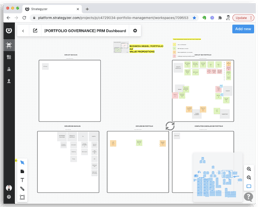But what’s the point of multiplying communication channels if they are not used effectively? On this matter one big mistake we’ve seen during the pandemic is wrong channel selection. When teams chose the wrong channel, at the wrong moment, for the wrong task. Some teams even lock themselves into limiting “workplace ideologies” like the zero-office company, the zero meetings team, the lovers or enemies of Slack, everything on Zoom, etc.
All communication channels have their pros and cons, the art is to use them strategically to get the benefits without the drawbacks.
What not to do
A first bad example is solving complex problems with messaging apps. For example:
- @Ann, @Bob, @Cliff: client is asking for new features to be developed by the end of the month. It’s urgent. All the documents are on the shared drive. Thanks.
- @Peter: stop criticizing me in public.
Resolving a complex problem like starting a new project or managing emotional situations requires a lot of information exchange and team interactions. Too little information gets through messaging apps and people must “guess” the missing pieces. As a result, perception gaps make small problems grow bigger and bigger and eventually become unmanageable. We met a zero meetings team whose projects were all late and over budget. Members were complaining about the messaging app and were on the verge of burnout, not difficult to guess why.
A second example is holding online meetings or large gatherings for simple updates. We heard things like:
- Bob: “This week we had no workload problems, we performed quality tests and the project is on schedule. I’ll go through the checklist point by point. 1 …, 2 …, 15 …”
- Ann: “We’re working on the final sketches, as you can see on my shared screen the top navigation is completed and we’re starting filling in the content. Let’s have a closer look at the 10 sections: …”
Reading this information would have taken 10 minutes, while (1) the meeting lasted two hours and (2) participants weren’t asked anything. Not surprisingly, cameras turn off one after the other and all you can see is walls of black squares with initials. Some teams we met mostly relying on Zoom weren’t more successful than those just relying on messaging. Members complained about the excess of back-to-back meetings, the difficulty to complete their own work (due to interruptions) and that projects were progressing too slowly.
These two examples illustrate what we call wrong channel selection. Zoom or Slack are not the problem, but when they’re used and for what.
Smart channel selection
Teams are smart at channel selection when they use high-bandwidth channels for solving complex problems and low bandwidth channels for simple ones. Not when they are doing the other way around, or when they lock themselves into a single channel.
Complex tasks require a high degree of team coordination. More information exchange, more questions and answers, more alignment on who does what, when, with whom and so on. To get all this information through is easier with high-bandwidth channels. Psycholinguistic studies and media richness theory have demonstrated that synchronous channels like face-to-face and video-conferencing offer higher bandwidths than asynchronous channels like messaging apps or email. So rich channels should be privileged when solving complex problems. We know this unconsciously: it’s more efficient for a team of scientists to develop a new vaccine by talking to each other, than by exclusively texting each other. Similar complex problems are managing emotional situations, onboarding a new team member or finding a developing a prototype.
Low complexity tasks require less coordination and it’s smart to use channels with lower bandwidth. Messaging apps and emails do the job perfectly and offer the great advantage of flexibility. Team members can organize their time freely and work without being interrupted for greater personal efficiency. It's a real waste of time, productivity and bandwidth to call a meeting for sharing minor updates or notifying about changes.

Add visuals and gain even more power
Choosing the right channel is the first step. To be even more efficient, switch to visual facilitation. 50% of meetings were considered unproductive before the pandemic
and this percentage may be even higher online if you haven’t already moved to visual facilitation. Mere talk is evanescent and it’s easy to forget or go around in circles. Meetings held simultaneously using video-conferencing and digital whiteboards enable higher degrees efficiency, especially if structured with visual tools. Visual tools help focus the conversation, actively involve participants and get tangible deliverables at the end.
Team progress becomes visible. The level of alignment is also greater: everyone can refer to and share the same visual content. For example, we use visual tools like the Team Alignment Map and the Team Contract before running an innovation sprint or to kick-off new projects.
The Team Alignment Map is a co-planning tool: plan the work, allocate resources and reduce projects’ risks together.
The Team Contract helps define the team rules and behaviors.
When embedded in digital whiteboards like the Strategyzer app or Miro.com, team members can easily co-plan activities, negotiate resources or define the team rules of the game from home, in the office or both.

The Strategyzer Innovation Platform is a whiteboard dedicated to strategy and innovation management.
Miro.com is a multi-purpose whiteboard for running online workshops.
It is the ideal setup for hybrid teams. Members can actively contribute to the team, no matter where they are located, simultaneously or independently.
Find out more about Stefano's work on www.teamalignment.co/

